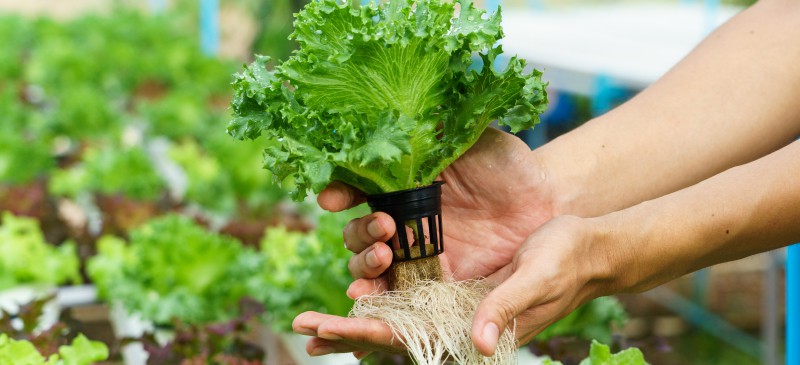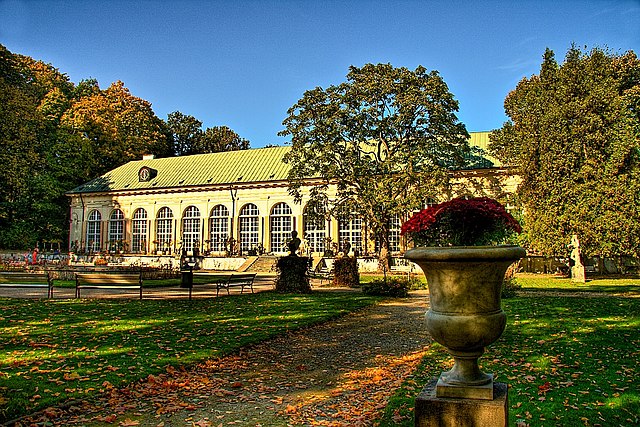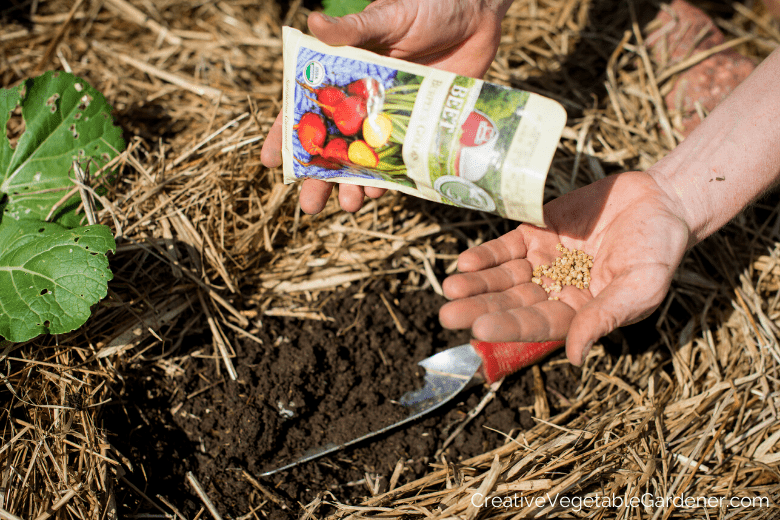There are alternate ways of growing plants than with soils. As a matter of fact, there have been progresses in the ways individuals can develop plants and blossoms utilizing mediums other than soil and standard growing mediums.
These techniques utilize less water since they use substances other than standard water and growing mediums.
One of the strategies that individuals know about is tank-farming, which develops plants in a fluid arrangement without the utilization of soil. The other is called hydroculture, and that is comparable yet in addition totally different at a crucial level.
We asked the Ambius Plant Specialist to make sense of what hydroculture is and what the advantages of utilizing this growing technique are for indoor plants.
What is hydroculture?
The expression “aquaculture” is natural to the vast majority. Tank-farming includes growing plants in a fluid growing medium arrangement. Aquaculture has become very well known as of late, especially in the development of vegetables like lettuce and tomatoes.
Hydroculture is like tank-farming in numerous ways however has a key distinction – rather than utilizing a supplement arrangement containing water as a growing medium, it utilizes an inorganic strong growing medium (or latent).
The idle growing medium is normally rock-based, regularly something many refer to as “extended dirt totals.” Hydroculture is in some cases called “aloof aquaculture,” meaning the plants develop without soil, bark or peat greenery.
What are earth totals? What is LECA?
The earth totals – frequently called LECA (Lightweight Extended Mud Totals) – are little bits of dirt. The little dirt pellets are warmed to extremely high temperatures in pivoting ovens. The outrageous intensity makes the earth particles grow, to some degree like popcorn popping. As it grows, the pellets lose thickness and foster many air pockets inside. The final result is marble-sized totals that seem to be like Cocoa Puffs grain.
Different forms of LECA might have an alternate appearance relying upon the wellsprings of earth and the interaction by which they are delivered. These mud totals become the growing medium.

What makes LECA an optimal growing medium?
LECA has three entirely advantageous growing properties:
It is incredibly permeable: This gives bountiful air and oxygen to the foundations of plants. Absence of oxygen is a significant reason for plant misfortune, especially for inside plants. The solid roots are less inclined to sickness and decaying.
It has hairlike properties: This implies that dry LECA retains water and wicks it upwards (frequently 8-10″ vertical or more) to give water to the plants.
It doesn’t conservative or rot over the long run (natural based soils do): This helps help in the conveyance of air to the foundations of the plants.
In view of these three properties, LECA can convey more than adequate water and supplements to the underlying foundations of plants while at the same time giving bountiful oxygen to the root zone. This makes for an ideal growing climate for the plant roots.
The underlying foundations of a plant are basic to the general wellbeing of a plant and a sound underground root growth will yield a solid plant. On the other hand, a frail underground root growth will debilitate and abbreviate their life expectancy.
What is the benefit of earth totals over typical natural soil?
The greatest benefit is the overflow of air to the roots, prompting an extremely dependable, sound root foundation. Regular natural soils (peat greenery, coconut ensemble, and so forth) separate and decay over the long haul, diminishing the positive growing characteristics they at first. They are additionally inclined to compaction. These variables diminish air, water and supplement accessibility to the roots.
Natural based soils can likewise be very challenging to water since as the plant and the soil age they are not difficult to over-water. At the point when they get excessively dry (especially peat greenery), they will frequently contract and may become hydrophobic, making them hard to re-wet and ingest dampness.
Natural based soils have their purposes, for example, giving an excellent growing mechanism for laying out plants (for instance when the plants are effectively growing at the producer or nursery stage.)
How does hydroculture work?
Most hydroculture plants are filled in ordinary natural soils like peat greenery. At the point when a created root foundation has secured itself, this soil is taken out. The evacuation cycle at first includes eliminating the leftover soil, normally with high-pressure hoses or power washers.
The subsequent exposed root ball is returned to a growing compartment and LECA is poured in around it, supplanting the soil. The plant is then watered to permit a few creeps to gather in the lower part of the LECA. This water is evil vertical and conveyed to the foundations of the plant.
The expulsion of the soil and supplanting with LECA can make shock and stress the plant. A few plants give not many indications of stress though others might drop a few leaves, hang, wither, and so on. Preferably, plants are “solidified off” in a nursery to permit them to adapt to the new growing medium.
When the plants have accustomed to hydroculture, they are generally simple to really focus on. Numerous hydroculture plants can go over about a month and a half until the following watering.
Watering is very direct – normally it just includes adding an inch or two of water to the lower part of the compartment. Little water meters are useful as they show how much has been added to the compartment.
What are the primary benefits of hydroculture?
Coming up next are the primary advantages of hydroculture:
- No parasite gnats: Inside plants are famous favorable places for little flies called “parasite gnats.” Albeit not destructive to the plant, organism gnats are amazingly irritating to individuals and very challenging to control. They flourish in wet or clammy natural matter and more normal soils give this climate, which is the reason growth gnats are so normal on soil-based plants. LECA is an inorganic (rock-based) growing medium and parasite gnats can’t repeat or flourish in this climate, consequently are non-existent with hydroculture plants.
- Less mystery while watering: Watering inside plants (counting houseplants) can be an interesting errand to dominate. Soil-based plants must be watered with a ton of accuracy and expertise. One of the most widely recognized and simplest mix-ups made with soil is over-watering. At the point when plants are watered too every now and again or a lot at one watering, soils become water-logged, denying the underlying foundations of oxygen. This makes the roots fall flat, accordingly making pressure and sudden passing the plant.
With hydroculture, it’s as yet conceivable to over-water or submerged plants however the edge for blunder is more noteworthy. The bountiful air present in the LECA empowers a more grounded underground root growth that is likewise seriously lenient if over-watered.
- Longer watering cycle: The recurrence at which inside plants should be watered shifts in view of various variables; nonetheless, the normal watering cycle for a 6″ plant is presumably like clockwork in soil. With hydroculture, the period of time between watering is normally significantly increased.
A 6″ hydroculture plant can regularly go a month and a half or more without being watered once more. This can be particularly useful for individuals that can’t get to their plants like clockwork (for example away from home, get-away, and so on.).
- Longer-enduring plants: Hydroculture is the ideal growing mechanism for inside plants on the grounds that the roots are better and more powerful. Sound underground roots support longer-enduring plants.
Is hydroculture another thing?
No. Hydroculture has been practically speaking for a really long time, especially in Western Europe. Numerous inside plants and houseplants in Western Europe are sold as hydroculture plants.
For what reason is hydroculture not normal in the US?
This principally has to do with the store network. Cultivators should have purchasers of their plant material when the harvest cycle wraps up. As of now, there isn’t sufficient interest to legitimize the development of hydroculture plants. Quite a bit of this has to do with an absence of information about hydroculture, remembering for the customer end. For instance, in the event that a buyer purchased a hydroculture plant, they would have to know how to really focus on it appropriately. Albeit this is an obstacle, ideally, it very well may be conquered after some time. Temporarily, we’re left with soil-based plants.

Could you at any point change your own plants over completely to hydroculture?
Indeed. Notwithstanding, the degree of progress changes in light of different variables (kind of plant, size of plant, expertise, and so on.). As a rule, changing over more modest plants than bigger ones is simpler. Great starter plants incorporate 6″ Aglaonema, Dracaenas and Pothos. Begin with new plants direct from a nursery place. It is hard to Change over more established and bigger plants.
In the event that you convert your own plants, anticipate an acclimation period, commonly enduring 1-2 months. This much of the time includes a couple of yellow leaves and different side effects.
How long will a hydroculture plant last?
It shifts yet it’s normal for a hydroculture plant to most recent decade or more.
Albeit a harder, stronger plant, they will in any case require satisfactory light, water, supplements, and so forth.
For what reason isn’t hydroculture more normal?
Right now, hydroculture is more normal among plant specialists who have changed over their own plants. Hydroculture would be significantly more typical if customers would buy the plants previously changed over. The transformation cycle (especially the soil evacuation) can be very chaotic and awkward to do in-house. Also, the vast majority know nothing about hydroculture or how it functions.
Are hydroculture plants exactly the same thing as aquaculture plants?
No. Despite the fact that there are a few likenesses among hydroculture and tank-farming, these are not tank-farming plants on the grounds that the roots are not continually suspended in a fluid arrangement. This is vital to know in light of the fact that the most well-known botch individuals make with hydroculture is over-watering the plants, like filling the whole growing medium with water and uprooting




